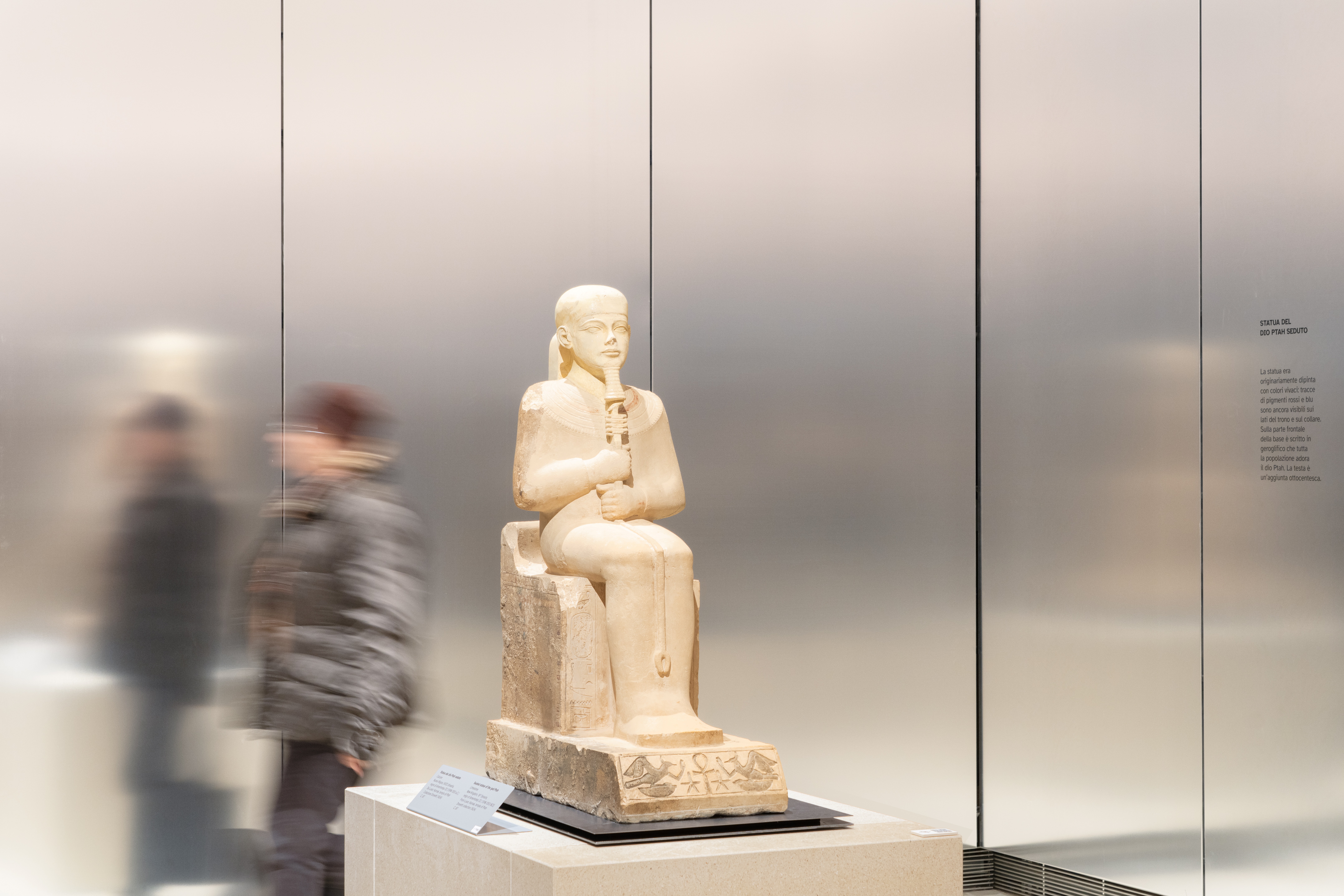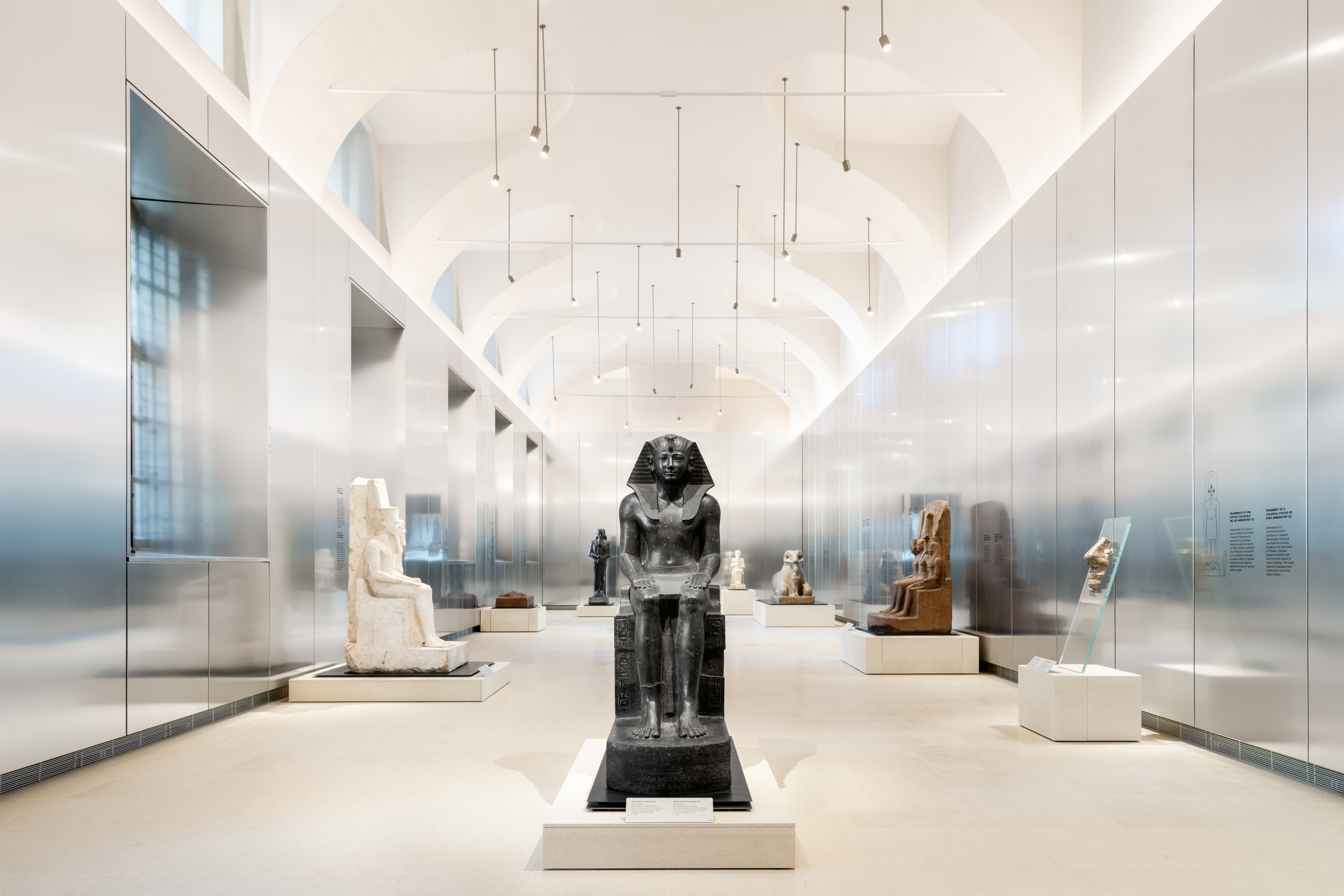
The Museo Egizio, dedicated to ancient Egyptian history, archaeology, and art, is a core attraction in Turin’s cultural landscape. As this historic institution celebrates its bicentenary, its renowned Gallery of the Kings has been remodelled by architects OMA in collaboration with Andrea Tabocchini Architecture.
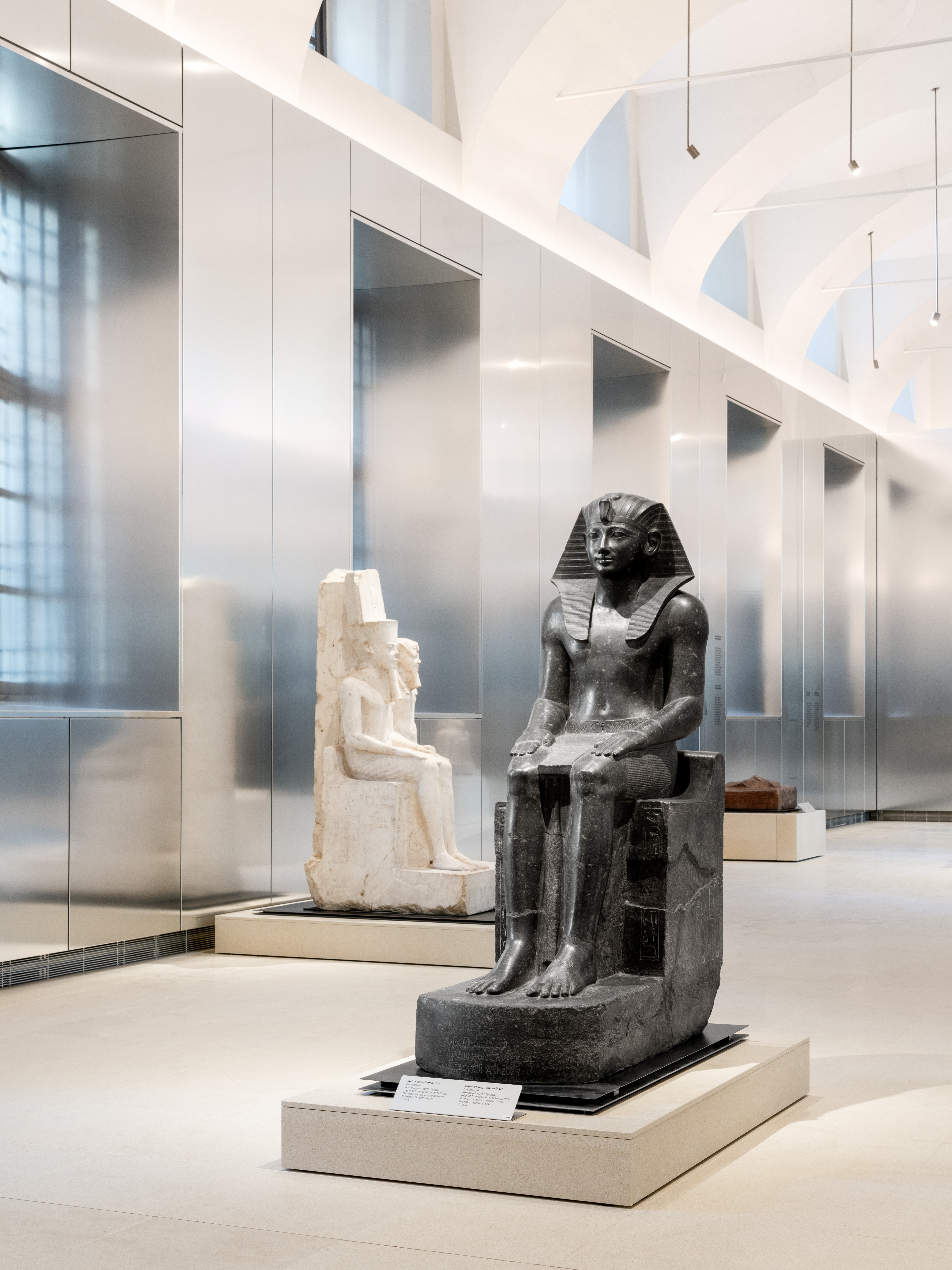
Hosting ancient colossal sculptures and artefacts representing kings and gods, the Gallery of the Kings has been completely redesigned to offer a new, striking, and sophisticated experience. The main focus has been to create a gallery where visitors can connect with the original place and time of these ancient artefacts – Thebes, or modern-day Luxor.
As OMA managing partner, architect David Gianotten, said, 'The opportunity to design the Gallery of the Kings compelled us to explore how the contemporary museum experience and the historical context of artefacts can coexist through architecture.'
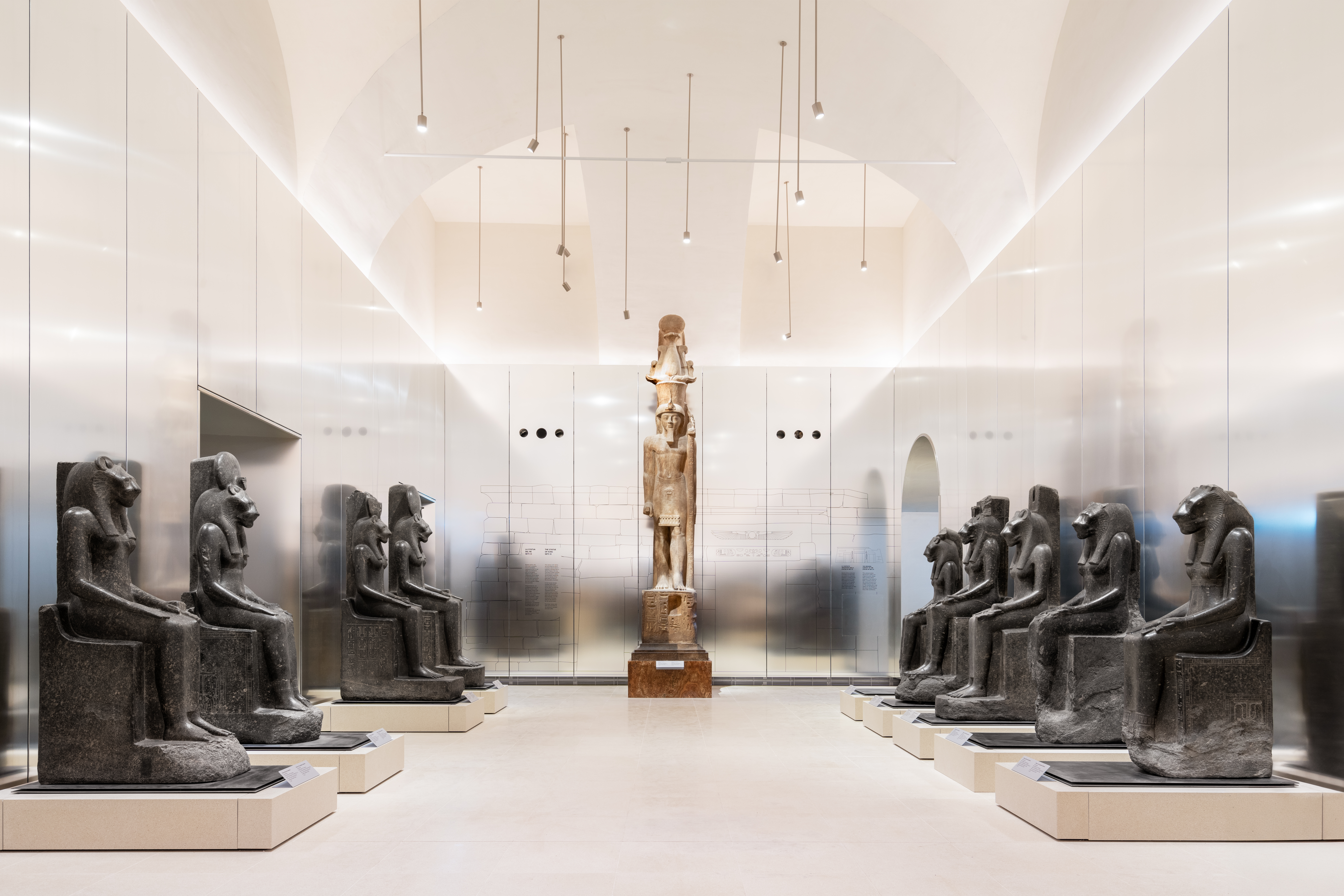
Aided by the curatorial and research efforts of the Museo Egizio, the gallery design revolves around a transition from darkness to light, a concept that historically symbolised the process of creation in ancient Egypt. Visitors are drawn through a dark entryway with digital projections on the history of Karnak – the artefacts’ original site – into the two main exhibition spaces.
Natural and artificial lighting fills the tall 17th-century halls where the ancient Egyptian sculptures are displayed. Soft reflections from the aluminum-covered walls lend an otherworldly ambience to the space while also displaying information about the artefacts.
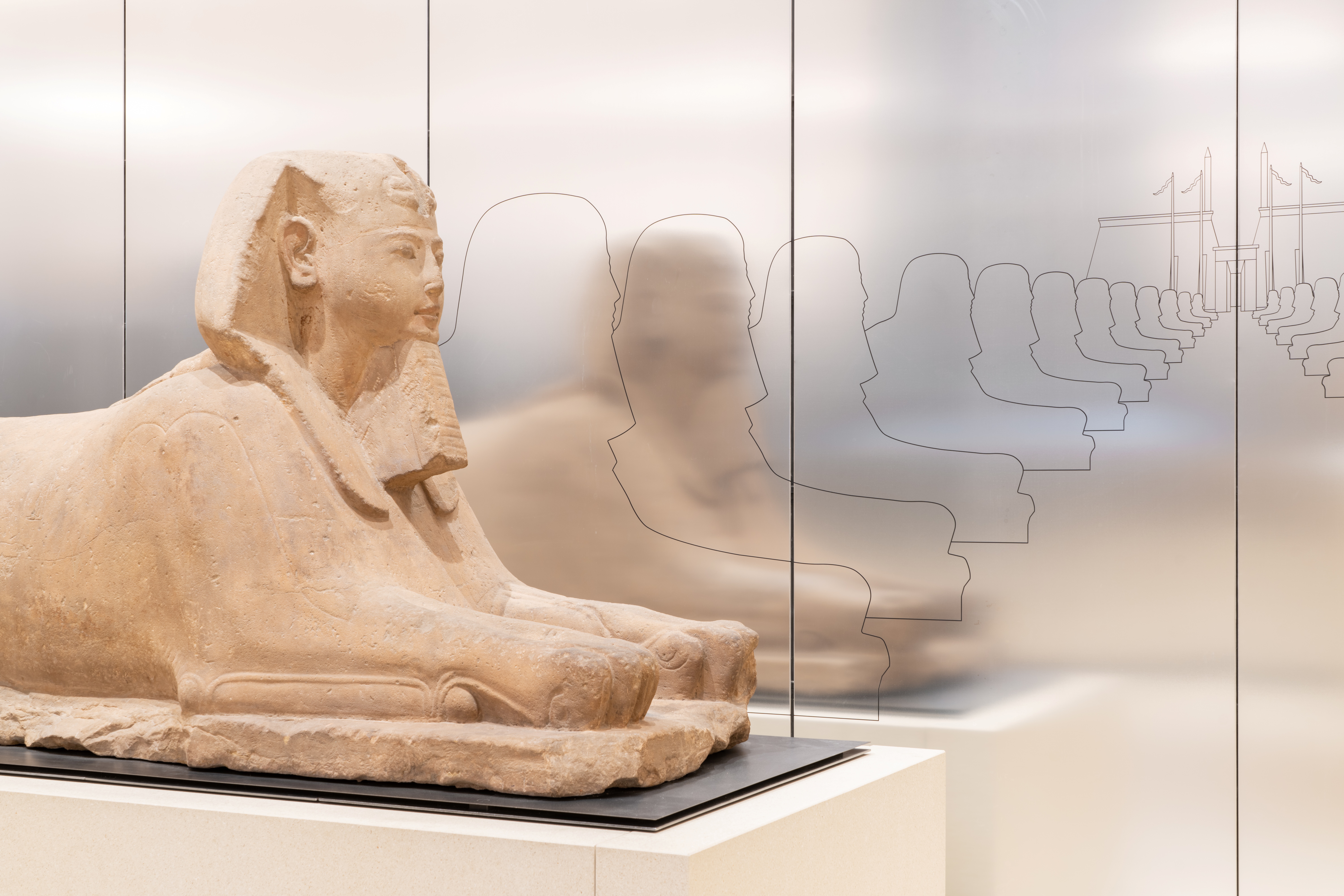
The two halls are arranged to mirror the Temple of Karnak's progression from outer to inner sanctuaries. The first hall evokes the temple's exterior spaces, with two sphinxes facing each other at the centre, flanked by statues of the goddess Sekhmet, culminating with the statue of Seti II. The second hall represents the inner sanctuaries, featuring a chronological display of statues of kings and gods.
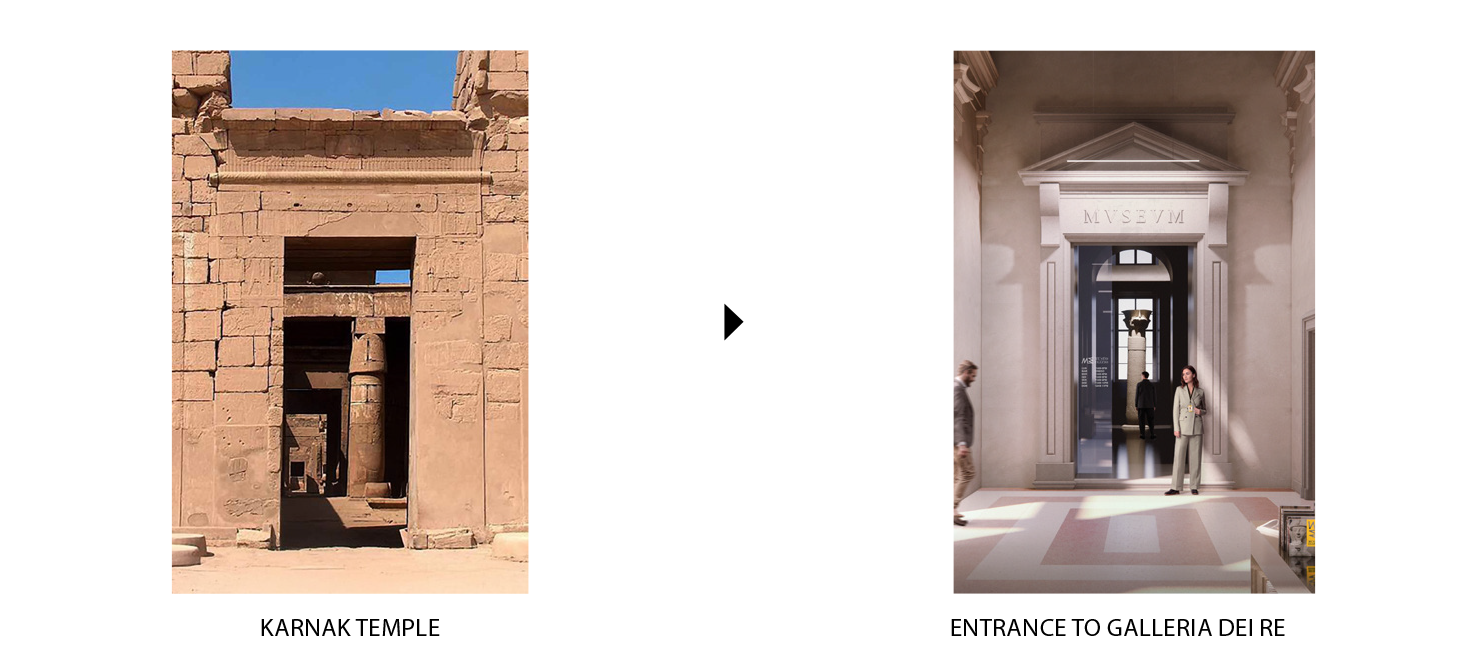
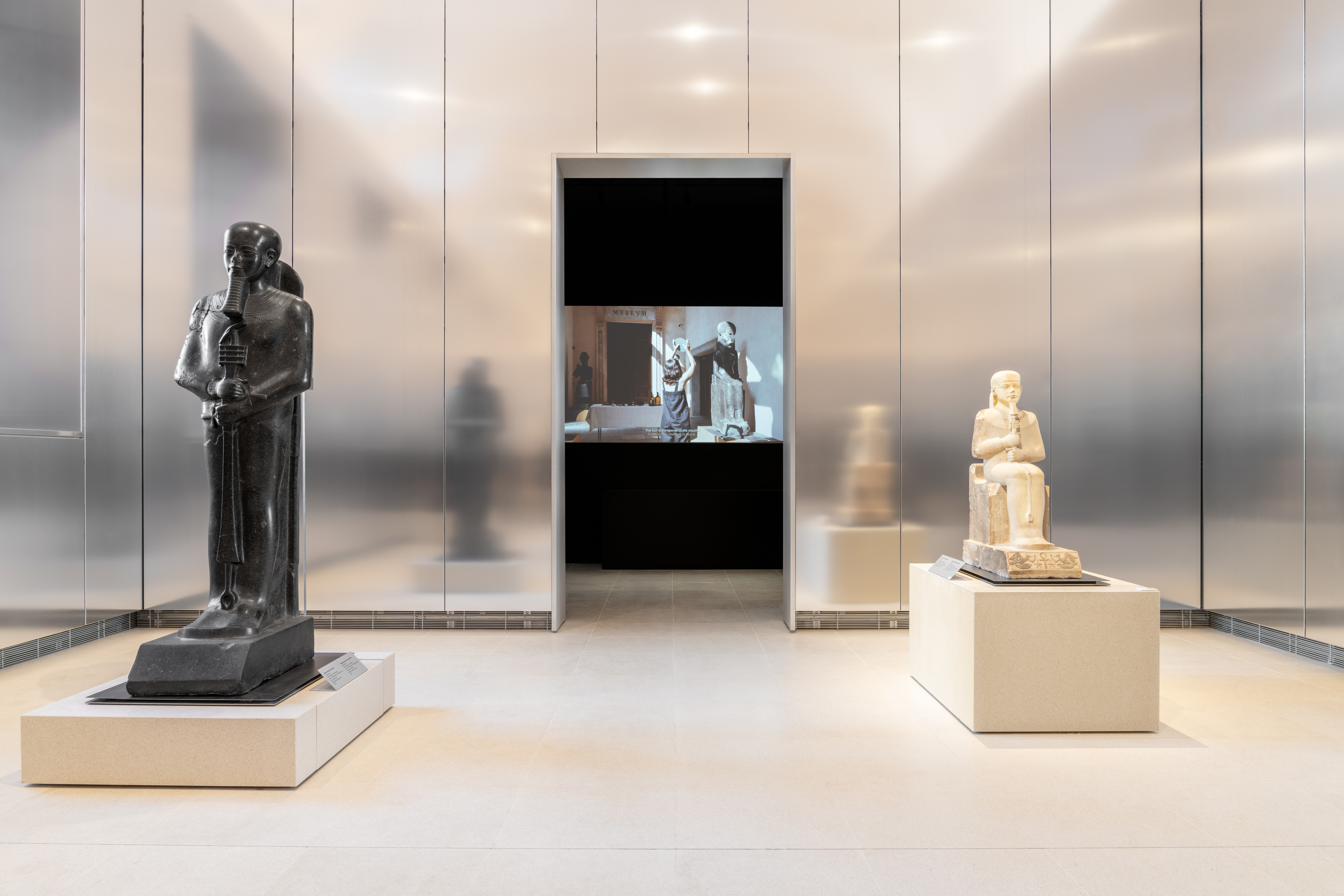
This redesign is part of the larger Museo Egizio 2024 initiative, which aims to transform the museum into a central civic space in Turin through a series of public urban rooms. Uncovered windows in the gallery now reveal the ancient statues to passersby on Piazza Egizia and Via Principe Amedeo, inviting the public to engage with the museum's treasures even from outside.
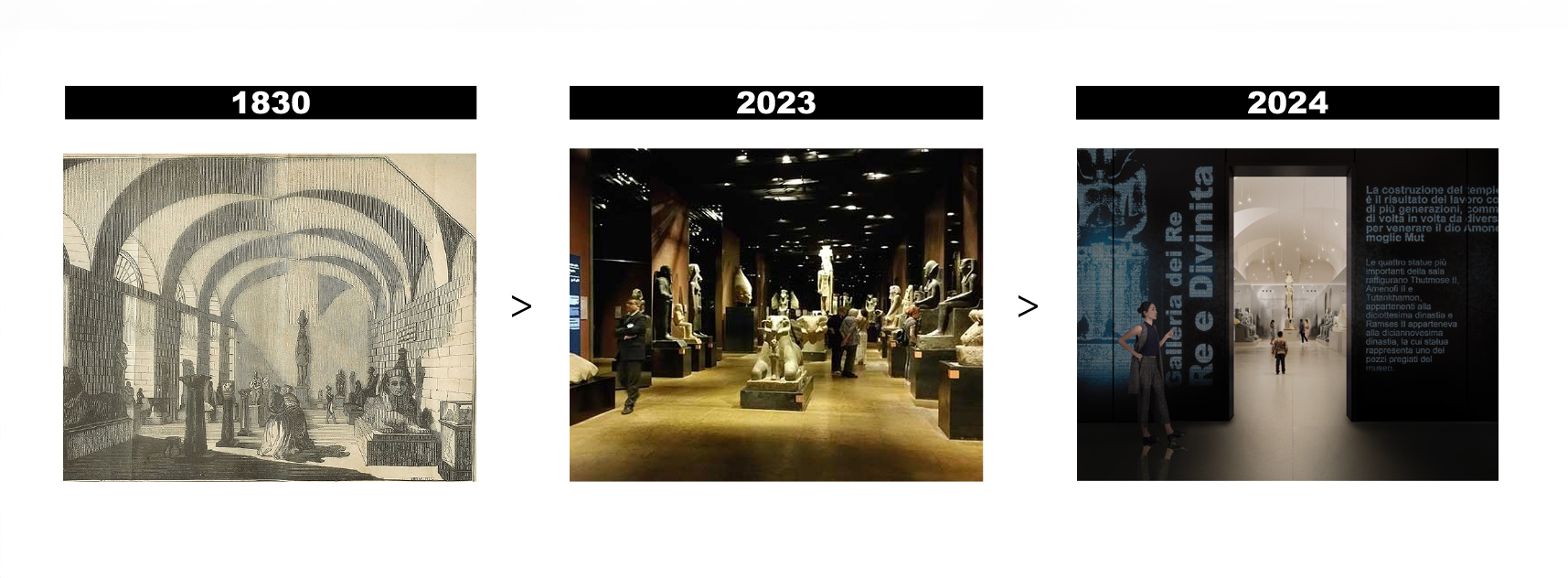
As Andrea Tabocchini expressed, ‘From the outset, we saw this project not just as an opportunity to redesign a unique exhibition space. Culture must honour the past while remaining alive, evolving, and inspiring the future.’ The collaboration between OMA, Andrea Tabocchini Architecture, and Museo Egizio's dedicated team has resulted in a space that bridges history and modernity, offering an immersive experience that honors the past while embracing contemporary design.
